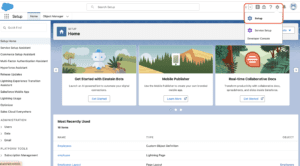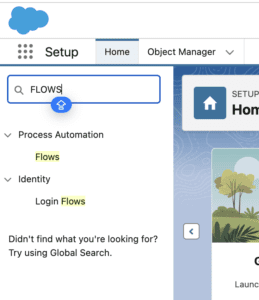In our previous blog post we had discussed about What is Fault Message in Salesforce Flow. In these blog post we discuss about Create Fault Message in Salesforce Flow
Contents
- 1 Introduction
- 2 Understanding Fault Messages
- 3 Setting Up a Salesforce Flow
- 3.1 Basics of Salesforce Flow
- 3.2 Key Components of Salesforce Flow
- 3.3 Creating a Fault Message in Salesforce Flow
- 3.4 Step-by-Step Guide to Creating a Fault Message
- 3.5 Common Use Cases for Fault Messages
- 3.6 Configuring Fault Handling in Salesforce Flow
- 3.7 Default Fault Handling Options
- 3.8 Custom Fault Handling Configuration
- 4 Best Practices for Fault Messages
- 5 Troubleshooting Fault Messages
- 6 Advanced Fault Handling Techniques
- 7 Testing Your Fault Messages
- 8 Real-World Examples
- 8.1 Handling Data Integrity Issues
- 8.2 Managing External System Failures
- 8.3 Impact of Fault Messages on User Experience
- 8.4 Avoiding Negative Impacts on User Experience
- 8.5 Monitoring and Logging Fault Messages
- 8.6 Logging Fault Messages for Future Analysis
- 8.7 Maintaining and Updating Fault Messages
- 8.8 Regular Maintenance Tips
- 9 Conclusion
- 10 FAQs
Create Fault Message in Salesforce Flow
Introduction
Salesforce Flow is a powerful automation tool that allows users to build complex processes with ease. However, even the most well-designed flows can encounter issues. This is where error handling comes into play, specifically through the use of fault messages. These messages are crucial for informing users when something goes wrong, ensuring that problems are identified and resolved quickly.
Understanding Fault Messages
What is a Fault Message
A fault message is an error notification that appears when something goes wrong during the execution of a Salesforce Flow. It provides details about the error, helping users and administrators diagnose and fix the problem.
Why Fault Messages are Crucial in Salesforce Flow
Fault messages are essential because they improve the reliability and usability of Salesforce Flows. Without them, users might not know when or why an error has occurred, leading to frustration and potential business disruptions.
Setting Up a Salesforce Flow
Basics of Salesforce Flow
Before diving into fault messages, it’s important to understand the basics of Salesforce Flow. Flows are visual representations of processes, allowing users to automate complex business tasks without writing code.
Key Components of Salesforce Flow
Salesforce Flows consist of several key components, including elements (such as screens, actions, and decisions), resources (variables, constants, etc.), and connectors that define the flow’s path.
Creating a Fault Message in Salesforce Flow
Step-by-Step Guide to Creating a Fault Message
Login to Salesforce Account

Click Gear icon Navigation to Salesforce

Search Quick find box in Flows

Open Existing Flow

Add A fault message
Common Use Cases for Fault Messages
Fault messages are commonly used in scenarios where data integrity is critical, such as in automated data entry processes or integrations with external systems.
Configuring Fault Handling in Salesforce Flow
Default Fault Handling Options
Salesforce provides default fault handling options that allow users to display standard error messages or route errors to a specific flow element.
Custom Fault Handling Configuration
For more control, users can configure custom fault handling. This involves creating specific error messages tailored to different types of faults, improving the clarity and usefulness of the notifications.
Best Practices for Fault Messages
Crafting Clear and Informative Fault Messages
Ensure that your fault messages are clear and concise. They should explain what went wrong and provide guidance on how to fix the issue.
When to Use Fault Messages
Use fault messages in any situation where an error could disrupt the flow’s execution or lead to incorrect outcomes.
Troubleshooting Fault Messages
Common Issues and How to Fix Them
Common issues with fault messages include vague error descriptions, messages not displaying properly, or incorrect fault paths. These can be fixed by reviewing and refining the flow’s configuration.
Tips for Effective Troubleshooting
When troubleshooting, focus on the specific element that failed and check the fault path configuration. Testing the flow with different inputs can also help identify issues.
Advanced Fault Handling Techniques
Using Apex for Custom Fault Handling
For advanced users, Apex can be used to create custom fault handling routines, allowing for more complex error management and integration with other Salesforce features.
Integrating Fault Messages with Email Alerts
Integrate fault messages with email alerts to notify administrators or users when a critical error occurs, ensuring timely intervention.
Testing Your Fault Messages
Importance of Testing in Salesforce Flow
Testing is crucial to ensure that your fault messages work as intended and provide the necessary information to resolve issues.
How to Test Fault Messages Effectively
Test your fault messages by running the flow with various inputs and scenarios to trigger different faults. This helps verify that the messages are accurate and helpful.
Real-World Examples
Handling Data Integrity Issues
In a flow designed for data entry, fault messages were used to catch and report data validation errors, ensuring that only correct data was entered into the system.
Managing External System Failures
In a flow that integrates with an external API, fault messages were configured to alert users when the external system was unavailable, allowing them to take corrective action.
Impact of Fault Messages on User Experience
Enhancing User Experience with Effective Fault Messages
Well-crafted fault messages can enhance the user experience by providing clear guidance on how to resolve issues, reducing frustration and improving workflow efficiency.
Avoiding Negative Impacts on User Experience
Conversely, poorly written or unclear fault messages can lead to confusion and disrupt the user experience, making it harder to identify and resolve issues.
Monitoring and Logging Fault Messages
Setting Up Monitoring for Fault Messages
Monitoring fault messages can be done through Salesforce’s built-in tools, such as Flow Logs, to track and analyze errors over time.
Logging Fault Messages for Future Analysis
Logging fault messages helps in analyzing patterns of errors, which can be useful for improving flow design and preventing future issues.
Maintaining and Updating Fault Messages
Regular Maintenance Tips
Regularly review and update your fault messages to ensure they remain relevant as your flows evolve.
Updating Fault Messages for New Requirements
As new requirements emerge, update your fault messages to address new scenarios and ensure they continue to provide value to users.
Conclusion
Creating effective fault messages in Salesforce Flow is crucial for maintaining a smooth and efficient user experience. By following best practices and regularly reviewing your fault handling configurations, you can ensure that errors are caught and communicated clearly, helping users to resolve issues quickly and keep processes running smoothly.
We Want to more about Create Fault Message in Salesforce Flow Click Here
FAQs
What are the most common causes of faults in Salesforce Flow?
The most common causes include data validation errors, issues with external systems, and incorrect flow configurations.
How can I ensure my fault messages are user-friendly?
Ensure that they are clear, concise, and provide actionable steps for resolving the issue.
Can fault messages be customized for different scenarios?
Yes, you can create custom fault messages tailored to specific faults in your flow.
What tools can I use to monitor fault messages in Salesforce?
Salesforce Flow Logs and custom Apex code are common tools used to monitor and log fault messages.
How often should I review and update my fault messages?
It’s recommended to review them regularly, especially when making changes to your flows or when new requirements are introduced.
In our next blog post we will discuss about How to Debug Flow in Salesforce Flow

2 thoughts on “Create Fault Message in Salesforce Flow”